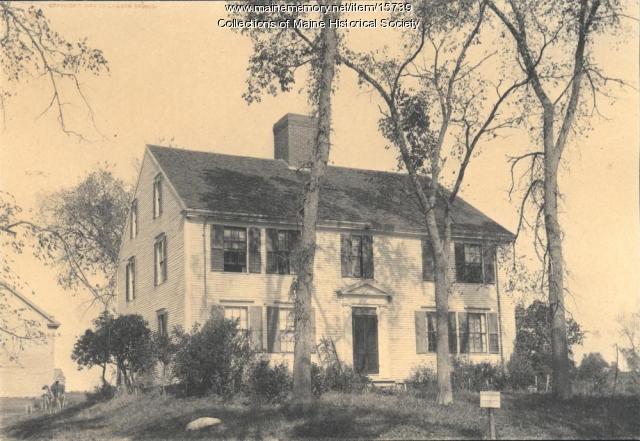Keywords: Country
Item 66367
Country Club, Bridgton, ca. 1938
Contributed by: Boston Public Library Date: circa 1938 Location: Bridgton Media: Linen texture postcard
Item 55205
Cross country skiing, Fairfield, ca. 1950
Contributed by: L.C. Bates Museum / Good Will-Hinckley Homes Date: circa 1950 Location: Fairfield Media: Photographic print
Item 37289
113-15 Commercial Street, Portland, 1924
Owner in 1924: Nathaniel W Shaw Use: Store & Storage
Item 67888
89 Ocean Avenue, Portland, 1924
Owner in 1924: Charles P. Greenleaf Use: Store
Item 109180
Penobscot Valley Country Club, Orono, 1948-1954
Contributed by: Maine Historical Society Date: 1948–1954 Location: Orono Client: Penobscot Valley Country Club Architect: Eaton W. Tarbell
Item 109342
Waterville Country Club, Waterville, 1970-1976
Contributed by: Maine Historical Society Date: 1970–1976 Location: Waterville Client: Waterville Country Club Architect: Eaton W. Tarbell
Exhibit
The National Federation of Business and Professional Women's Clubs (NFBPWC) held their seventh annual convention in Portland during July 12 to July 18, 1925. Over 2,000 working women from around the country visited the city.
Exhibit
Maine Through the Eyes of George W. French
George French, a native of Kezar Falls and graduate of Bates College, worked at several jobs before turning to photography as his career. He served for many years as photographer for the Maine Development Commission, taking pictures intended to promote both development and tourism.
Site Page
Music in Maine - Country Music
"… 1966Maine Historical Society A Career in Country Music By Ken Brooks Choosing a Career in Country and Bluegrass Music Click to read entire…"
Site Page
Music in Maine - Radio Cowboys and Country Music
"Funded by the Maine Country Music Association, it is the first such hall of fame museum in Maine. Founders established the MCMHOF to recognize and…"
Story
Maine Country Music Hall of Fame & Museum
by Ken Brooks
How the Maine Country Music Hall of Fame & Museum began
Story
Choosing a Career in Country and Bluegrass Music
by Ken Brooks
How I became a country and bluegrass musician
Lesson Plan
Longfellow Studies: Longfellow Meets German Radical Poet Ferdinand Freiligrath
Grade Level: 9-12
Content Area: English Language Arts, Social Studies
During Longfellow's 1842 travels in Germany he made the acquaintance of the politically radical Ferdinand Freiligrath, one of the influential voices calling for social revolution in his country. It is suggested that this association with Freiligrath along with his return visit with Charles Dickens influenced Longfellow's slavery poems. This essay traces Longfellow's interest in the German poet, Freiligrath's development as a radical poetic voice, and Longfellow's subsequent visit with Charles Dickens. Samples of verse and prose are provided to illustrate each writer's social conscience.
Lesson Plan
Longfellow Studies: The Elms - Stephen Longfellow's Gorham Farm
Grade Level: 6-8, 9-12
Content Area: English Language Arts, Social Studies
On April 3, 1761 Stephen Longfellow II signed the deed for the first 100 acre purchase of land that he would own in Gorham, Maine. His son Stephen III (Judge Longfellow) would build a home on that property which still stands to this day. Judge Longfellow would become one of the most prominent citizens in Gorhams history and one of the earliest influences on his grandson Henry Wadsworth Longfellow's work as a poet.
This exhibit examines why the Longfellows arrived in Gorham, Judge Longfellow's role in the history of the town, Henry Wadsworth Longfellow's vacations in the country which may have influenced his greatest work, and the remains of the Longfellow estate still standing in Gorham today.





















